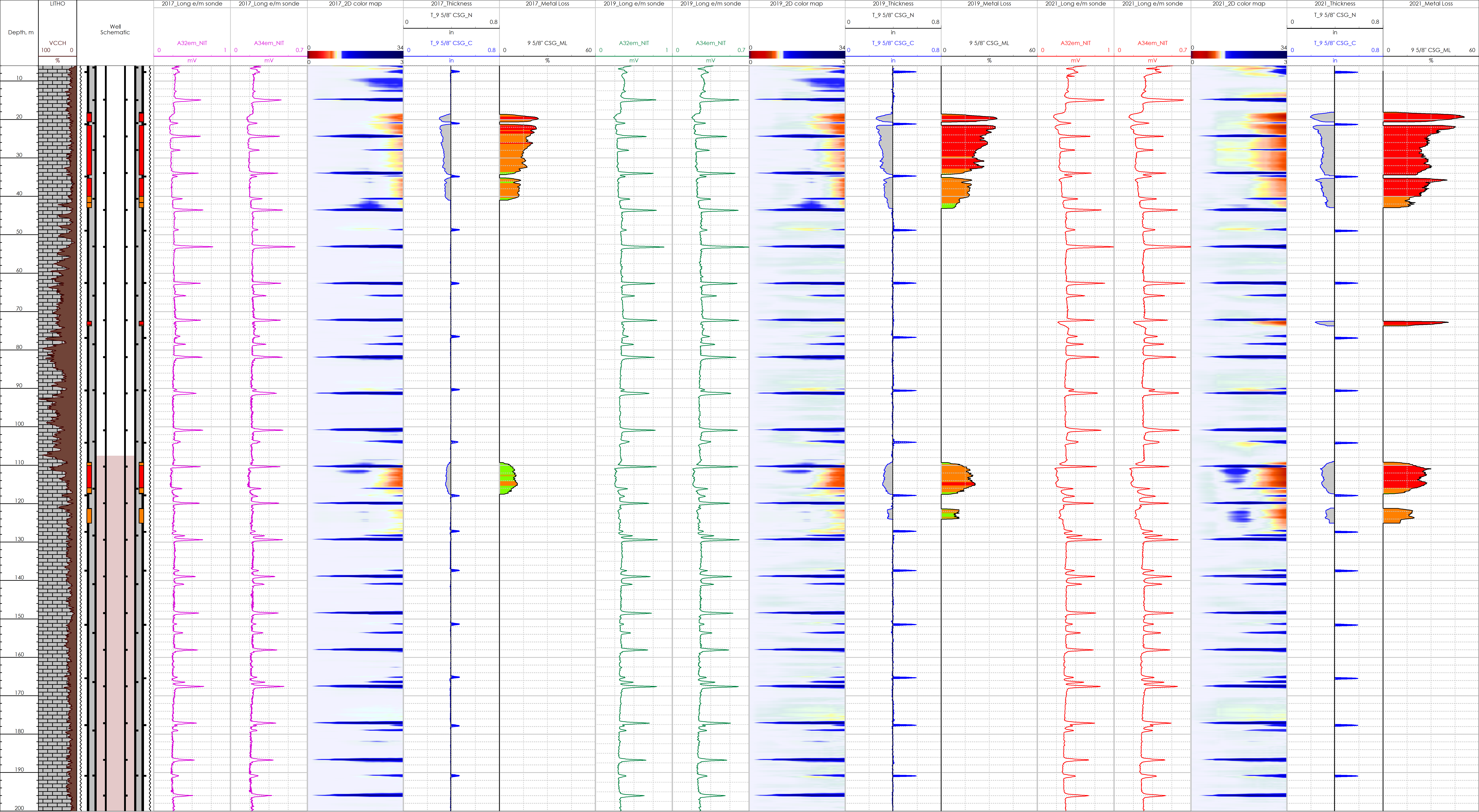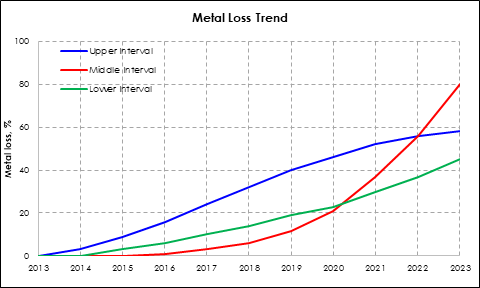Tool Overview
The Pulsed Electromagnetic Tool is a non-destructive corrosion logging tool which was designed to measure the individual wall thickness of concentric pipes in a single run. The latest generation of this tool provides quantitative wall thickness measurement for up to 4-5 barriers.
Main Advantages
- Measures individual wall thickness of concentric pipes in a single run.
- No special well preparation requirement prior to logging e.g., scraper etc.
- Survey can be conducted in the presence of any type of fluid oil, water, gas.
- Presence or absence of cement behind pipes will not affect data quality.
- The unique design of sondes allows each coil to function as generating and receiving modes. This helps minimize tool length thus facilitating ease of operation in the field.
- The tool also incorporates Gamma ray, Temperature and Pressure sensors, therefore capturing additional information in a single run.
- The presence of multidirectional sondes can identify the type of defect, especially in the first barrier.
The advantages listed above make this tool the most cost-effective corrosion evaluation tool in the market.
The tool’s high resolution and sensitivity are achieved through a large dataset acquired from the electromagnetic sondes. Data processing done with proprietary software and metal loss calculation is based on the best match between real decay and calibrated decay. A huge calibration library is incorporated into the software and minimizes error in the metal loss calculation.
Integrity Challenge
It is important to have a good cement bond in the annulus across corrosive intervals. External coating on the pipe will lessen the risk of corrosion. However, if the cement quality is poor and early corrosion is identified then it is essential to increase the frequency of corrosion logging to determine the integrity of the pipe and predict the rate of corrosion. This will allow remedial action to be planned in a timely manner to avoid catastrophic failure. This will also provide data to predict corrosion rates for similar wells.
Corrosion Logging Result
One example when corrosion monitoring was done in one well as shown below:
The well is a horizontal ESP oil producer drilled in 2013. The well was completed with a 9 5/8” uncoated surface casing, a 7” intermediate casing and a 4.5” production liner. A 3.5” ESP completion string was run in hole.
The first corrosion log was done in 2017, 4 years after the well was put on production. The EMDs log data indicated the presence of two corroded intervals at the shallow section of the well. Maximum metal loss across the upper interval was approximately 25%. In the lower interval the maximum metal loss was approximately 12%.
The second corrosion log was done in 2019. The EMDs log data showed that metal loss across the upper interval had increased to 35% whereas metal loss across the lower interval had increased to 20%.
The third corrosion log run was run in 2021. Maximum metal loss across the upper interval had increased to almost 60%, and across the lower interval increased to 30%. An additional interval with almost 40% metal loss was detected at 73 m which was not recorded in the 2017 and 2019 log data.
Based on the calculated metal loss from the 3 logging surveys, the corrosion trend for each interval was plotted as shown below. It can be seen that the corrosion rate is more aggressive in the middle interval. The very high annual rate of corrosion predicts that the metal loss will reach 100% in approximately 4-5 years. The corrosion rate across the upper interval is stabilizing at a few percent per year and will reach 100% in the next 10-15 years. Metal loss across the lower interval shows an increased rate of corrosion where metal loss will reach 100% in approximately 7 years. With more aggressive corrosion in the middle and lower intervals this can lead to a potential of corrosion migrating to the inner pipe. Regular logging of the well gives the client a better understanding of the overall well integrity and therefore can plan remedial action in advance. In this particular case the client planned to run a scab liner to mitigate any leak to surface.
More case studies
Looking for more information?
Get in touch with us and our representative will get back to you
Contact Us




